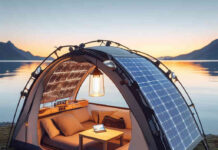
 Exciting new report, Zero Carbon Australia Stationary Energy Plan – to be launched at University of Melbourne in 14 july 2010 – argues that it is technically possible to reach 100 % renewable energy for Australia within a decade, and that the technology to achieve the transition is already commercially available. This event brings together key voices in the renewable energy debate to explore the state of the industry, survey the critical decade ahead, and discuss the challenges facing a zero carbon roadmap.
Exciting new report, Zero Carbon Australia Stationary Energy Plan – to be launched at University of Melbourne in 14 july 2010 – argues that it is technically possible to reach 100 % renewable energy for Australia within a decade, and that the technology to achieve the transition is already commercially available. This event brings together key voices in the renewable energy debate to explore the state of the industry, survey the critical decade ahead, and discuss the challenges facing a zero carbon roadmap.
The world stands on the precipice of significant change. Climate scientists predict severe impacts from even the lowest estimates of global warming. The search for dwindling oil reserves is having dramatic social and environmental impacts. A rational response to the problem demands a rapid shift to a zero fossil fuel, zero-emissions future. The Zero Carbon Australia 2020 Stationary Energy Plan (the Plan) outlines a technically feasible and economically attractive way for Australia to transition to 100% renewable energy within ten years.
The ZCA2020 Plan shows that with a combination of energy efficiency, fuel-switching from gas and oil to electrified energy services, then using a combination of commercially available renewable energy technologies, Australia’s energy needs can be met with 100% renewables. Wind and Concentrating Solar Thermal (CST) with Molten Salt Storage are the two primary technologies used, with some backup from biomass and existing hydro. Modelling on a half-hourly timescale shows that this combination can ensure 100% reliable supply. Implementing the proposed renewable infrastructure over a ten-year timescale would require a small percentage of Australia’s industrial capacity, in terms of resources and labour force. The required investment of $37 Billion/year is the equivalent of 3% of Gross Domestic Product. The extra money spent versus Business-As-Usual to 2020 is the equivalent of $3.40 per person per day, the cost of a cup of coffee. Avoided future costs of fossil fuels make the Plan an economically attractive proposal.
Australia’s projected on-grid electricity demand in 2020 is 325TWh/yr. The ZCA2020 plan proposes that this can be provided through a combination of renewable power sources, 40% of this electricity (130TWh/yr), will be supplied from wind power, which is to be provided through 50,000 MW of wind turbine capacity. The rest of the electricity will be supplied from 42,500 MW of Concentrating Solar Thermal (CST) with storage, providing reliable, 24- hour dispatchable power through molten salt thermal storage. The investment costs of these technologies have been based on expected cost reductions from significant scale-up of the renewable industry.
The plants are located at sites around Australia that are selected for their wind availability, solar incidence, economy of scale, transmission costs, technical efficency, and geographical diversity‚ 23 sites for wind, and 12 sites for CST. Extra generation capacity is also costed in for remote off-grid power generation.
Backup will be provided by existing hydropower capacity, and from biomass fired heaters attached to some of the CST plants.



